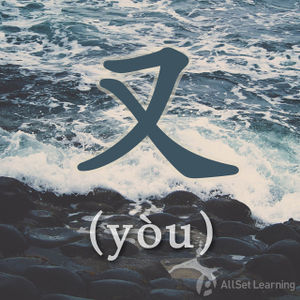Repeated actions in the past with "you"
-
Level
-
Similar to
-
Used for
-
Keywords
| This article is a stub. Editors can help the Chinese Grammar Wiki by expanding it. |
This one is definitely the most advanced usage of 又 here, and you're not going to use it nearly as much as the others. Here we repeat the verb used and place 又 in the middle. The repetition of the verb emphasizes how the action is being repeated again and again.
Structure
In the pattern below, 又, together with a repeating verb, indicates that the speaker did something repeatedly (not just twice) in the past. 了 must be placed right after the first 又.
Subj. +Verb + 了 + 又 + Verb,还是 / 就是 ……
Note that "还是" or "就是" is usually used to emphasize that "nothing changed" after all.
Examples
- 这 个 人 我 看 了又 看 ,还是 觉得 我 不 认识 他。 I looked at him again and again, but I still think I don't know him.
- 我 想 了又 想,还是 觉得 不 能 这样 做 。 I thought it over again and again, I think I can't do it like this.
- 他 找了又 找,还 是 没 找 到 他 的 钱 包。 He searched again and again, and still couldn't find his wallet.
- 他 想了又 想 ,还是 不 同意。He thought it over again and again, and he still disagree.
- 我们 问 了 又 问,她 就是 不 说。We asked again and again, but she wouldn't say it.
- 他 试 了 又 试,就是 打 不 开 门。He tried again and again, but he still couldn't open the door.
- 这 个 方案 改了又 改,终于 通过 了。This plan was changed again and again, and finally it passed.



